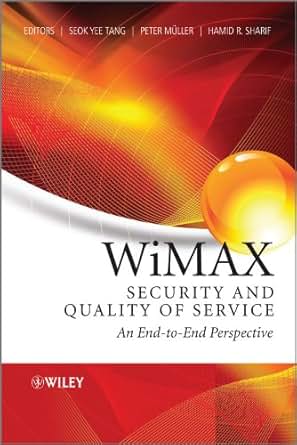
File Size: 3.63 Mb
Description
The rapid increase in demand for high-speed broadband wireless networks has spurred the development of new technologies in recent years. Worldwide Interoperability for Microwave Access, known as WiMAX, is one of these technologies. WiMAX is based on the IEEE 802.16 family of standards and offers flexible fixed and mobile wireless solutions along with high-bandwidth services for extended distance coverage and a variety of applications including support of an array of multimedia functions.IEEE 802.16e is the most popular implementation of this standard; it defines a path of evolution to support high throughput wireless technology for mobile systems. The WiMAX mobile wireless standard, which was defined originally by the IEEE 802.16e- 2005 amendment, is now being deployed in more than 140 countries by more than 475 operators.
The 802.16 Medium Access Control (MAC) is designed to support high data transfer for uplink and downlink communications between a base station and a large number of clients for continuous and bursty traffic. WiMAX also supports significant flexible operations across a wide range of spectrum allocation including both licensed and license-exempt frequencies of 2 to 11 GHz. It provides an access system which is based on a request-grant mechanism designed to support service requirements, scalability and efficiency. Along with the bandwidth allocation task, the IEEE 802.16 access mechanism provides a sublayer designed to support privacy and authentication for network access and establishment of connection.
Quality of Service (QoS) is an important factor in WiMAX technologies. WiMAX can provide QoS for wireless broadband communications over an extended coverage area for real-time delay-sensitive applications such as Voice over IP and real-time streaming in stationary or mobile environments. It offers different access methods for different classes of traffic. The 802.16e protocol is a connection-oriented medium access control with service flows as well as a grant-based system which allows centralized control and eliminates overheads and delay of acknowledgements. This in turn provides an effective QoS handling which is fundamentally different from connectionless wireless protocols such as IEEE 802.11. The IEEE 802.16 grant-based MAC can react to QoS requests in real time which reduces the workload of the base stations and produces lower overheads since connections are aggregated.
Content:-
Preface
Acknowledgement
List of Contributors
List of Acronyms
List of Figures
List of Tables
Part A. Introduction
1. Overview of End-to-End WiMAX Network Architecture
Part B. Security
2. WiMAX Security Defined in 802.16 Standards
3. Key Management in 802.16e
4. WiMAX Network Security
Part C. Quality of Service
5. Cross-Layer End-to-End QoS Architecture: The Milestone of WiMAX
6. QoS in Mobile WiMAX
7. Mobility Management in WiMAX Networks
Part D. Advanced Topics
8. QoS Challenges in the Handover Process
9. Resource Allocation in Mobile WiMAX Networks
10. QoS Issues and Challenges in WiMAX and WiMAX MMR Networks
11. On the Integration of WiFi and WiMAX Networks
12. QoS Simulation and An Enhanced Solution of Cell Selection for WiMAX Network
Appendix List of Standards
Index
Author Details
"Seok-Yee Tang"
Think Wireless Tech Pte. Ltd., Singapore
"Peter M¨ uller"
IBM Zurich Research Laboratory, Switzerland
"Hamid R. Sharif"
University of Nebraska-Lincoln, USA
You May Also Like These E-Books:-





No comments:
Post a Comment